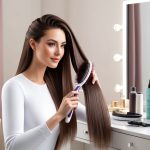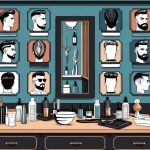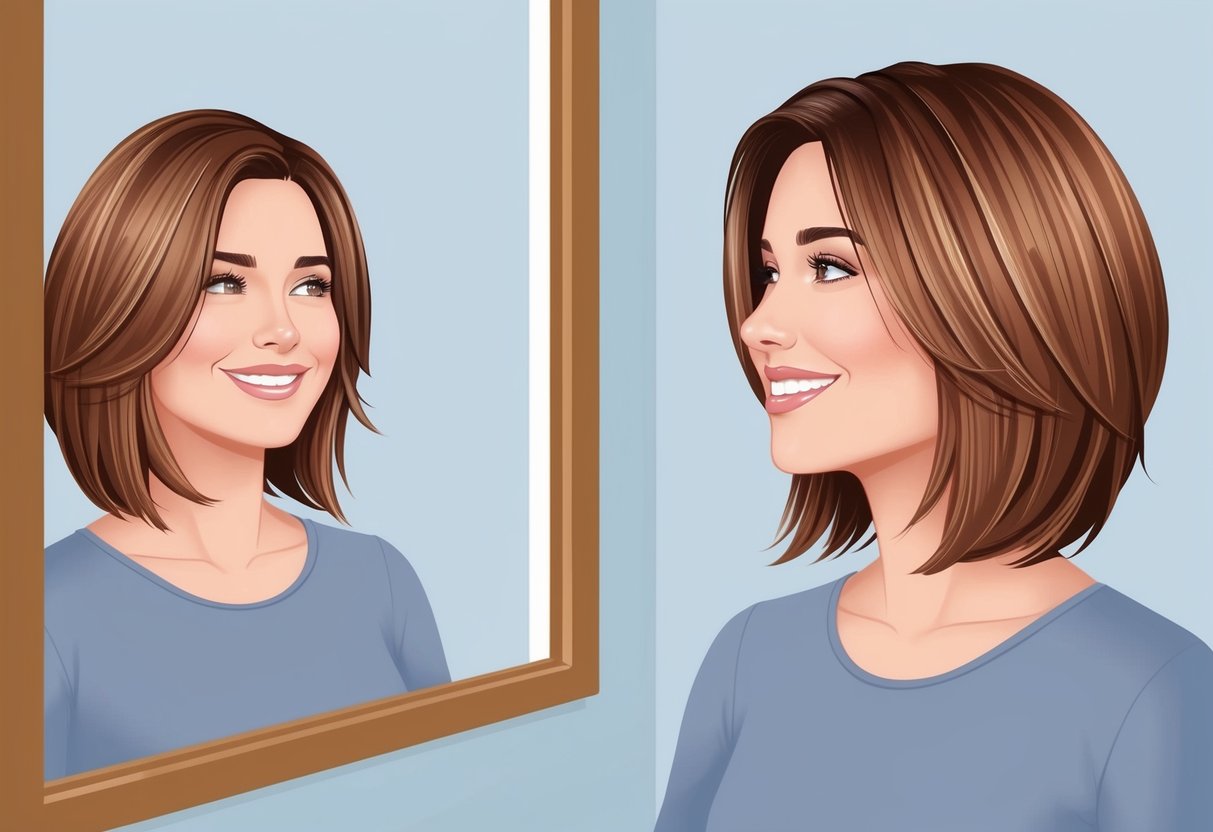
Embracing Waves and Curls
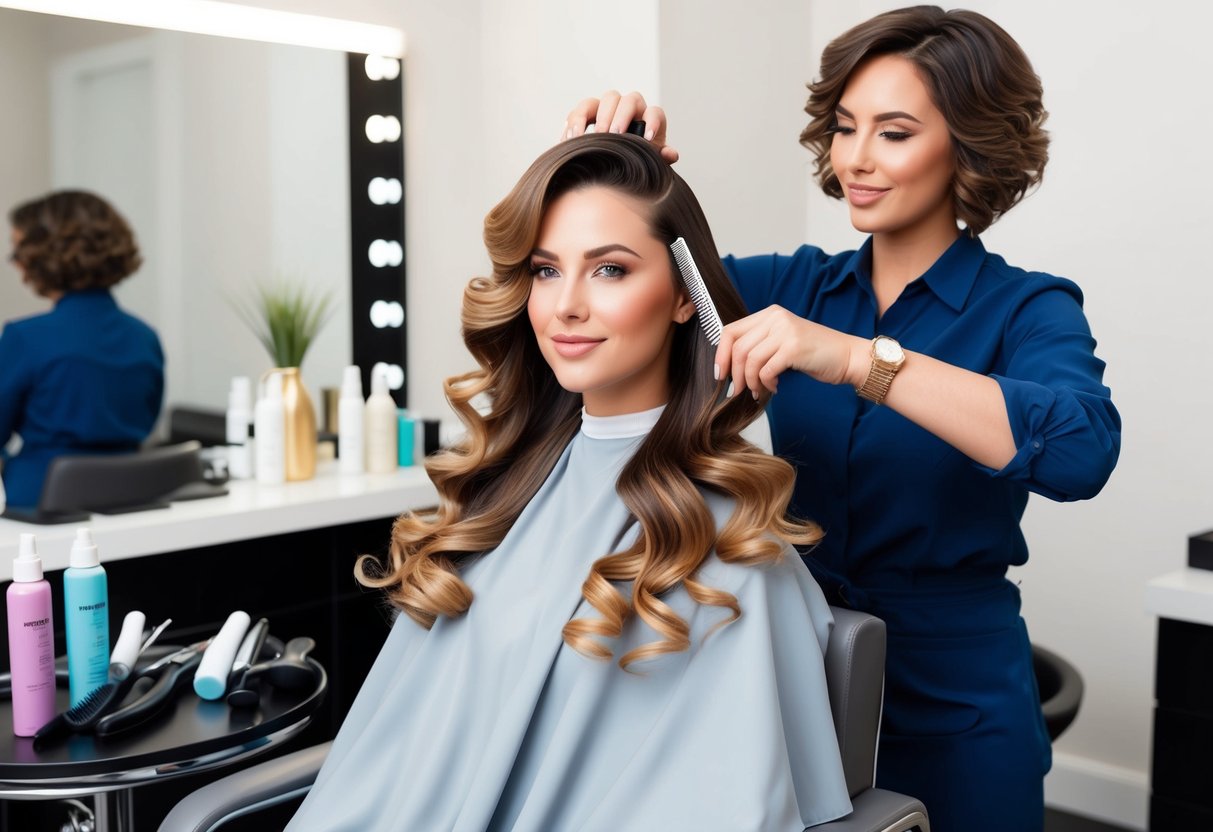
Adding waves and curls to mid-length and short hair can soften facial features and provide movement, making styles more dynamic. Both wavy and curly bobs help women over 40 look refreshed while offering styling flexibility.
Wavy Bob Looks
A wavy bob is versatile and flatters a wide range of face shapes. Layers are often added to enhance natural volume, giving the hair a fuller, more youthful appearance.
Shoulder-length bobs with soft, loose waves create gentle framing around the face and are ideal for hair that could use extra body or texture. Women seeking a low-maintenance yet stylish cut often appreciate the wavy bob for its easy styling.
Simply using a curling wand or leaving hair to air dry with a texturizing product can achieve the desired wave. Highlights or subtle balayage can accentuate the movement in the hair, making the waves stand out even more.
This look can be adjusted with length, from chin to shoulder, based on individual preference and hair texture. For more ideas on how to style a wavy bob, check out these elegant wavy hairstyle options.
Chic Curly Bob Options
A curly bob delivers definition and bounce, perfect for those with naturally curly or wavy hair. Rounded bobs help maintain a balanced silhouette, while layered curly bobs keep the style light, preventing heaviness at the ends.
This shape also helps control volume and reduce a “pyramid” effect, which can be a concern with thick curls. Styling a curly bob typically involves lightweight leave-in conditioners or curl creams to encourage curl pattern without weighing hair down.
Options like the curly lob, shaggy curly bob, or a cut with rounded bangs all offer up-to-date variations that add personality to the look. Explore more curly hairstyles for women over 40 for inspiration and ways to personalize a chic curly bob.
Styling Tips to Maintain Freshness

Regular maintenance and modern daily routines keep haircuts for women over 40 looking polished. The right approach to trims and everyday styling ensures hair retains its intended shape, shine, and volume.
Proper Trims to Preserve Shape
Making time for consistent trims every 6 to 8 weeks is essential for preserving haircut lines and preventing split ends. Overgrown layers can weigh down the style, leading to a lackluster look and flatness around the crown.
Shorter styles, like bobs or pixie cuts, may require more frequent touch-ups for crispness and definition. A professional stylist can refine face-framing layers to soften features and maintain a balanced silhouette.
Blunt ends and precision lines especially benefit from sharp trims, which keep the hairstyle tidy and age-defying.
Key considerations for trims:
| Haircut Type | Ideal Trim Interval | Reasons |
|---|---|---|
| Layered styles | 6-8 weeks | Prevents heaviness, maintains movement |
| Bob/pixie cuts | 4-6 weeks | Retains shape, keeps edges neat |
| Long hair with layers | 8-10 weeks | Reduces split ends, controls length |
Daily Styling for Effortless Appeal
Styling hair daily with lightweight products, such as volumizing mists or smoothing serums, enhances shine and bounce. Heat protection sprays safeguard strands from blow dryers or flat irons, reducing the risk of damage.
Adding subtle waves or loose curls with a curling wand can give body and rejuvenate mature hair, as suggested by experts in timeless haircuts for mature women. Fingers or wide-tooth combs are useful for detangling and avoiding breakage in fragile hair.
A quick morning routine might include:
- Applying a nourishing oil to tame frizz
- Flipping the head upside down for root lift
- Setting the style with a light-hold hairspray
Adapt techniques based on hair type and texture to boost the overall appearance and longevity of the style.
Choosing the Right Hairstylist
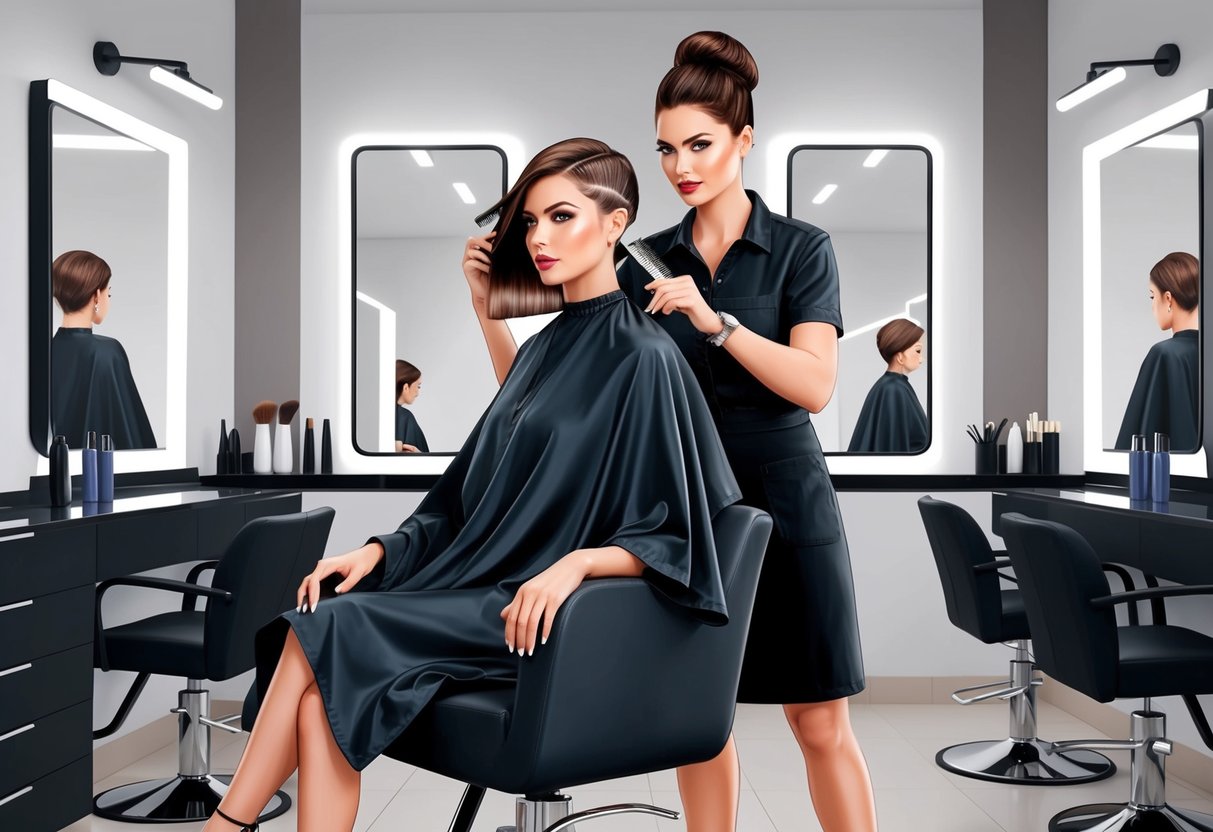
Selecting a skilled hairstylist is essential for women over 40 seeking youthful, flattering haircuts that enhance their features. A well-trained professional can provide personalized recommendations and help achieve a look that feels both modern and age-appropriate.
Consulting for Personalized Haircuts
A thorough consultation forms the foundation for a successful haircut experience. During this process, the hairstylist should evaluate factors like face shape, hair texture, lifestyle, and maintenance preferences.
An effective consultation might include showing photos of preferred hairstyles, discussing current hair routine, and exploring which styles align with the client’s personal aesthetic. Many experts recommend discussing past cut successes and disappointments, giving the stylist insight into what works and what doesn’t.
A quality hairstylist will also recommend variations or modifications that complement changing hair densities or greying patterns commonly experienced after 40. Bringing inspiration from reliable sources, such as the top-rated styles highlighted in this curated list, can spark conversation and clarify expectations.
This step ensures both client and stylist are aligned before any trimming begins.
Communicating Your Desired Style
Clear communication with the hairstylist greatly increases the chances of achieving a flattering result. Rather than relying on vague terms, it’s recommended to use specific language: for example, asking for “a textured long bob with face-framing layers” helps avoid misinterpretation.
Written notes, saved photos, or even Pinterest boards can help articulate the desired look. It’s important to be honest about styling abilities and daily routine, so the hairstylist can suggest practical, manageable cuts.
Clients should feel comfortable giving real-time feedback during the cut if adjustments are needed. Discussing long-term hair goals, such as growing out shorter hair or transitioning to a low-maintenance style, allows the stylist to create a haircut plan that adapts over time.

